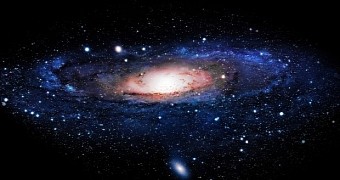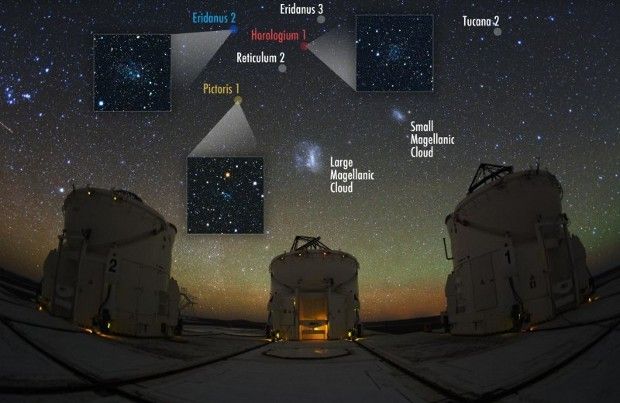A new paper in The Astrophysical Journal announces the discovery of a previously unknown pack of rare dwarf galaxies that astronomers say are orbiting our Milky Way. Yup, we've just landed ourselves a brand new crew of cosmic neighbors.
The newly documented galaxies are awkwardly small when compared to the Milky Way, which is why they are referred to as dwarf galaxies. Still, scientists are quite fascinated with them. This is because they might hold the key to better understanding the elusive dark matter populating the cosmos.
First things first, let's meet our new neighbors
Technically speaking, the nine rare dwarf galaxies discovered by space explorers with the University of Cambridge in the UK in the orbit of the Milky Way are not new to the neighborhood. On the contrary, they've likely been around for billions of years now. We just failed to notice them.
As detailed in the astronomers' report in The Astrophysical Journal, the closest of these dwarf galaxies sits at a distance of about 95,000 light-years from us. The most distant, on the other hand, is located an impressive 1 million light-years away, maybe more.
The reason these cosmic structures are considered dwarf galaxies is that, unlike our Milky Way, they comprise surprisingly few stars. Thus, it is estimated that they contain an average 5,000 such fiery celestial bodies. By comparison, the Milky Way holds billions of stars.
Being this small, dwarf galaxies are by no means easy to find. In fact, the University of Cambridge scientists say that, although theoretical models say that hundreds of such cosmic structures are probably orbiting the Milky Way, very few have until now been discovered.
“The discovery of so many satellites in such a small area of the sky was completely unexpected,” study lead author Dr. Sergey Koposov of the University of Cambridge’s Institute of Astronomy commented on the discovery of these nine new neighbors of ours. “I could not believe my eyes,” he added.
Interestingly enough, the astronomers behind this research project are not even sure that all of the nine newly documented cosmic structures are dwarf galaxies. Apparently, as many as six of them could be what scientists call globular clusters, i.e. mere collections of stars orbiting a common point in space.
Why dwarf galaxies are quite fascinating
The trouble with our universe is that the movements of the celestial bodies that populate it cannot be explained by factoring in these bodies' gravitational pull alone. On the contrary, data at hand hints at the presence of forces exercised by something we cannot see. This something is dark matter.
Unlike the matter we are all too familiar with, dark matter neither emits nor absorbs light. Hence the fact that we cannot see it and the only way to study it is by looking at the effect it has on visible matter. Although invisible to us, dark matter is believed to account for a large portion of the universe.
The team of University of Cambridge astronomers argue that the nine dwarf galaxies they documented orbiting the Milky Way, together with other cosmic structures of this kind, are almost entirely made of dark matter. Specifically, chances are they contain about 99% dark matter.
If this is true, the dwarf galaxies could prove the perfect cosmic guinea pigs to test existing theories concerning dark matter. As study co-author Dr. Vasily Belokurov put it, “Dwarf satellites are the final frontier for testing our theories of dark matter.”

 14 DAY TRIAL //
14 DAY TRIAL // 

